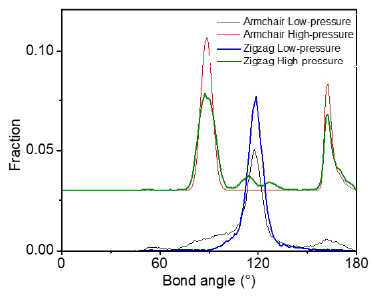
Molecular dynamics simulation of pressure effect on silicene nanoribbons
- Department of Physics, School of Education, Can Tho University
- Deppartment of Physics, Faculty of Natural Science, Can Tho University
- Department of Materials Engineering, Faculty of Engineering Science, Ben Gurion University, Israel
Abstract
Introduction: In 2D materials, the boundary of silicene formed as nanoribbons plays an essential role in synthesis and can be controlled to achieve different characteristics. Our study aims to investigate the structural preference depending on the pressure tolerance and boundary dependency. Methods: The main methodology used in our study is molecular dynamics simulation with Stillinger Weber potentials. Our simulation was carried out on 2D models of honeycomb silicene obtained through high and low pressurized cooling from the liquid state and then heat annealing for a decent time. The final configuration of silicene will be investigated in terms of structures and thermodynamic properties. Results: We found that the effect of the cooling process under high pressure formed a 4-fold ring structure, while at low pressure, 2D honeycomb networks were recovered but with different degrees of defects depending on the boundary condition. The main difference between several transitions of 2D silicene is discussed via the evolution of total energy and the change in coordination number and bond-ring distribution. Conclusions: This study provides insights into the dependency of the structure of silicene on the pressure and boundary, represented by the first-order transition at low pressure and a congregation of disordered low-numbered rings into the ordered tetragonal formation at high pressure. Notably, our results have shown that silicene nanoribbon materials can be controlled by pressure to obtain unfamiliar structures such as pentagonal and tetragonal networks.

